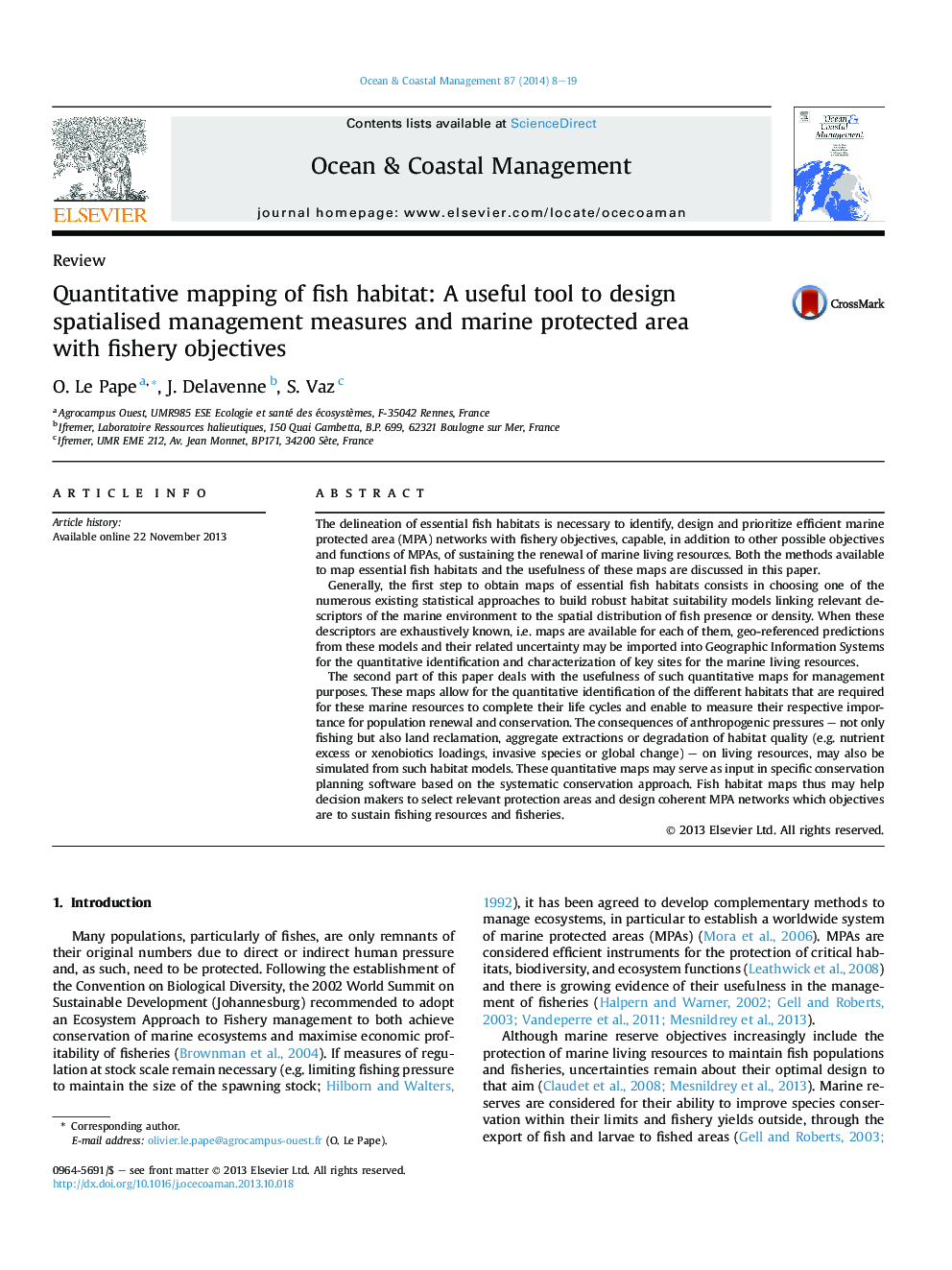| کد مقاله | کد نشریه | سال انتشار | مقاله انگلیسی | نسخه تمام متن |
|---|---|---|---|---|
| 1723815 | 1520539 | 2014 | 12 صفحه PDF | دانلود رایگان |
• The delineation of fish habitats is needed to identify MPAs with fishery objectives. This paper reviews:
• The quantitative methods to map fish habitats and identify key sites for fishery resources.
• The usefulness of maps to measure the importance of habitats to sustain resources.
• The relevance of fish habitat maps to design MPA networks.
The delineation of essential fish habitats is necessary to identify, design and prioritize efficient marine protected area (MPA) networks with fishery objectives, capable, in addition to other possible objectives and functions of MPAs, of sustaining the renewal of marine living resources. Both the methods available to map essential fish habitats and the usefulness of these maps are discussed in this paper.Generally, the first step to obtain maps of essential fish habitats consists in choosing one of the numerous existing statistical approaches to build robust habitat suitability models linking relevant descriptors of the marine environment to the spatial distribution of fish presence or density. When these descriptors are exhaustively known, i.e. maps are available for each of them, geo-referenced predictions from these models and their related uncertainty may be imported into Geographic Information Systems for the quantitative identification and characterization of key sites for the marine living resources.The second part of this paper deals with the usefulness of such quantitative maps for management purposes. These maps allow for the quantitative identification of the different habitats that are required for these marine resources to complete their life cycles and enable to measure their respective importance for population renewal and conservation. The consequences of anthropogenic pressures – not only fishing but also land reclamation, aggregate extractions or degradation of habitat quality (e.g. nutrient excess or xenobiotics loadings, invasive species or global change) – on living resources, may also be simulated from such habitat models. These quantitative maps may serve as input in specific conservation planning software based on the systematic conservation approach. Fish habitat maps thus may help decision makers to select relevant protection areas and design coherent MPA networks which objectives are to sustain fishing resources and fisheries.
Journal: Ocean & Coastal Management - Volume 87, January 2014, Pages 8–19
